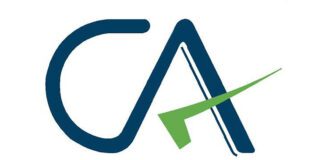Teaching can be one of the most rewarding professions, but it also carries the weight of responsibility. Every day, educators stand in front of students with the goal of not just delivering content, but shaping how knowledge is understood, applied, and remembered. Success in this effort often comes down to planning. A well-prepared lesson plan can guide a teacher through instruction, keep students engaged, and help the class stay on track.
This article explains the elements of effective lesson planning, offers practical examples, highlights expert perspectives, and shows how structured preparation supports both teacher and student growth.
Why Lesson Planning Matters
Lesson plans give teachers direction and structure. Without them, a classroom can quickly lose focus. With them, teachers can anticipate questions, guide discussions, and create smooth transitions between topics.
Research has shown that students in classrooms with structured lessons are more likely to meet academic goals. The Organisation for Economic Co-operation and Development (OECD) highlights that effective lesson planning directly impacts student achievement by providing clarity and predictability in learning.
The Core Elements of a Strong Lesson Plan
While lesson styles vary, most effective plans include some or all of these components:
| Element | Purpose |
|---|---|
| Learning Objectives | Define what students should know or be able to do by the end of the lesson. |
| Lesson Materials | List resources needed, such as textbooks, charts, or digital tools. |
| Instructional Steps | Provide a roadmap of activities and teaching strategies. |
| Assessment | Outline methods for checking understanding, like quizzes or group tasks. |
| Reflection | Space for the teacher to evaluate what worked and what can be improved. |
By breaking lessons into these components, teachers avoid leaving outcomes to chance.
Different Approaches to Lesson Planning
No single format fits every teacher. Some rely on very detailed outlines, while others use brief notes. Below are three common approaches:
- Traditional Lesson Plans
Structured with objectives, activities, and assessments, these plans are especially helpful for new teachers. - Thematic Lesson Plans
These connect lessons to a central theme or real-world issue. For example, a middle school science class may tie a unit on ecosystems to local environmental concerns. - Student-Centered Plans
These give more control to students, encouraging group projects, peer teaching, or inquiry-based learning.
Story Example: A Teacher’s Turning Point
Maria, a fourth-grade teacher, once entered her classes with only general ideas in her head. She often found herself rushing through topics or answering the same questions multiple times. After attending a workshop, she started designing lesson plans with clear objectives and structured activities. Within a few weeks, students were more engaged, her lessons flowed more smoothly, and she felt less stress. That small adjustment changed how she viewed her classroom.
Practical Strategies for Writing Lesson Plans
Here are some strategies teachers can apply right away:
- Write Measurable Objectives: Use action verbs like explain, compare, or solve, rather than vague terms such as understand.
- Plan Timing: Estimate how long each activity will take to avoid rushing the ending.
- Differentiate for Learners: Prepare slight variations of tasks to support struggling students and challenge advanced ones.
- Include Interaction: Build time for questions, group work, or discussion rather than just lecture.
- Leave Room for Flexibility: While structure is vital, students may surprise you with insights worth exploring briefly.
Case Study: How Lesson Planning Boosted Science Learning
A high school science department once noticed that student scores on biology exams were consistently lower than in chemistry and physics. Teachers realized they were relying heavily on lectures in biology. They redesigned their lesson plans to include structured lab experiments, case studies, and regular small assessments. Within two years, average test scores rose by nearly 20 percent, and student interest in biology classes grew.
Expert Opinions on Lesson Planning
Educational researcher Charlotte Danielson has emphasized that “planning and preparation reflect how well a teacher understands content and anticipates student responses.” Similarly, John Hattie’s influential research on teaching practices shows that planning with clear learning intentions and success criteria significantly improves learning outcomes.
Teachers who spend time planning are not just organizing content—they are predicting how their students will engage with it, and that foresight often makes the difference between a weak and a strong classroom experience.
Challenges Teachers Face
Even though lesson planning is valuable, many educators find it time-consuming. Teacher surveys show that instructors spend between 7 to 12 hours a week planning lessons. Balancing this workload with grading and other responsibilities is not easy. Some turn to templates, online resources, or collaboration with colleagues to reduce the burden.
Another challenge involves shifting away from rigid plans. If a class is struggling with a concept, forcing them to stick to the original timing may reduce actual learning. Teachers must strike a balance between sticking to structure and adapting in real time.
Technology’s Role in Lesson Planning
Digital tools now help teachers design lessons more efficiently. Online platforms offer databases of lesson plan templates, interactive activities, and alignment with state or national education standards.
For example, using a shared digital document allows teachers in the same grade level to collaborate on plans in real time. This not only saves time but also ensures consistency in what students across different classrooms experience.
One online source where teachers share strategies is Mentor Teaching, which provides practical insights on designing structured, effective lessons.
Tips for Reflection After Teaching
After a lesson, reflection helps teachers refine their practice. Questions to ask include:
- Did students meet the objectives?
- Which parts of the lesson ran smoothly?
- Where did students struggle?
- What adjustments should I make next time?
Reflection can be as simple as jotting notes in the margin of a lesson plan. Over time, these reflections become a rich source of professional growth.
Example of a Lesson Plan Template
| Section | Details |
|---|---|
| Objective | Students will be able to describe how photosynthesis works. |
| Materials | Whiteboard, worksheets, diagram of a plant cell, science textbook |
| Instructional Steps | 1. Introduce concept with a diagram; 2. Short video; 3. Group worksheet |
| Assessment | Quick quiz and group discussion |
| Reflection Notes | Students struggled with vocabulary—add more examples next time |
This kind of template keeps a teacher organized while leaving room for flexibility.
Moving Forward: Building a Habit of Planning
Once lesson planning becomes routine, it reduces stress and improves teaching effectiveness. Educators often find that with practice, writing plans takes less time and becomes more intuitive. Collaboration with colleagues can also make planning a shared and rewarding activity.
New teachers may begin with detailed lesson structures, while experienced instructors might rely on more concise notes since they can anticipate how lessons will unfold. Both approaches can work if the focus remains on student learning.
Conclusion
Lesson planning is not just preparation—it is a practice that shapes the learning experience in meaningful ways. By defining objectives, preparing materials, and thinking through activities in advance, teachers provide structure and purpose to every class.
Through careful planning, reflection, and adjustment, educators can reduce stress, improve classroom engagement, and raise student achievement. Resources, case studies, and expert advice all point to the same truth: planning ahead creates better outcomes.
Teachers who commit to planning lessons consistently will see improvements not only in their students’ learning but also in their own confidence and satisfaction in teaching.










